When it comes to growing a lot of food in a small area, I have so many tricks and tips to share with you! My own garden is 5000 square feet right now (including both vegetables and fruits) but it wasn’t always that way.
And to tell you the truth, since we are growing a year’s worth of food for six people, I still constantly employ all my methods for growing a large amount of food in a small space. If you check out my Guide on How Much to Plant Per Person for a Year’s Worth of Food, you will see that you need to be creative to make that happen with the space you have.
Want to know the first BIG secret to growing more food in a small area?
#1 Succession Planting.
You need to succession plant if you want to grow more food in your space. Succession planting means using several different planting methods to make food available for longer and to maximize your space.
Let’s go through some of the different methods of succession planting.
 Lettuce Planted in March 2019
Lettuce Planted in March 2019
Same Vegetable, Different Planting Times.
Here’s an example: This year, I planted my lettuce in March and then again, one month later in April. It worked out perfectly. By the time we finished eating all the first crop, the second one was ready. You get a longer harvest. The lettuce doesn’t get overgrown or bitter because it’s all harvested in a small window at its peak.
I will tell you, that I do this with almost every vegetable crop that I grow- even the unconventional ones. I am in zone 6b US, I have about 150 frost free days on average so I do have a little room to play with. That is why I will also succession plant using the first method, same vegetable with different planting times for even my warm season crops. I plant tomatoes, cucumbers, corn, potatoes, beans and squash all at least twice in the season.

Here’s why: One year, I planted indeterminate tomatoes in May. Then I had some volunteer tomatoes come up right around that time. They were much smaller but I replanted them into my garden. Around August my first set of tomatoes had caught late blight and their production slowed way down. The volunteer tomatoes that I planted were young, healthy and strong. They showed no signs of disease and produced loads of tomatoes all the way up to the first frost.
Every year since, I have planted my tomatoes twice. I garden organically and here in Arkansas, my first planting of tomatoes will usually fall to one disease or another but the end of summer. The second planting of tomatoes pulls the harvest all the way to fall.
Cucumbers are the same. You get a great first batch and after a while they pass their peak. Once they are past their peak, the cucumbers will taste bitter even when picked at the right size. It’s because they are old. Planting a second batch allows for you to have peak tasting cucumbers through the whole season as well as peak production.
It’s not worth it to hang on to a a crop of any vegetable plants that are not producing that well. Rip the old ones out and put a different crop there that will produce more. Don’t let a poor producing crop take up valuable garden space.
One last thing that I want to make clear. When succession planting each of those warm season plants more that once, I have to plant them in different areas of the garden because their growing will overlap. You’re not pulling out your tomatoes to plant more tomatoes in the same spot. You need to plant them in different locations because the first crop will not even have produced by the time your second crop gets planted.
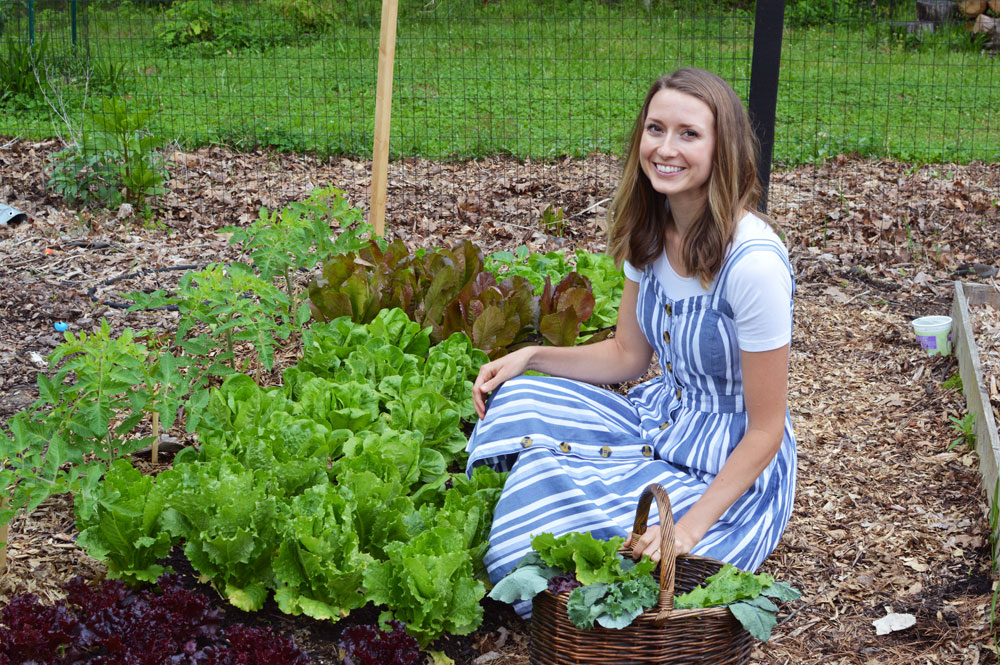 Second Planting of Lettuce April 2019
Second Planting of Lettuce April 2019
For my cool season crops, they also get planted more than once. In the case of lettuce, it was twice during spring, then I’ll plant again in fall. For other cool season crops like radishes, peas, cabbages, etc. You’ll want to plant once in spring and then again in late summer for a fall harvest.
Replacing Harvested Crops with a New Crop
You will have lots of plants that will be ready to be harvested throughout the season. Pull the old plants out and replace them right away.
Here’s an example: My bulb onions are usually ready about mid July. I pull them all out to let them cure. In mid July it is HOT here and the best thing I’ve found that germinates in the heat is beans. I will plant a crop of dry beans right after I’ve harvested those onions.
There is a few benefits to this. One is that beans are a crop that will fix nitrogen in the soil. They are such a great crop for after you’ve pulled something that has depleted the nutrients. Another great benefit is that if I plant my beans in July, I will still get a crop before the first frost hits.
In a cooler zone, make sure you calculate out how many days until your first frost and put in a crop that will produce or be almost to maturity around your average last frost date.
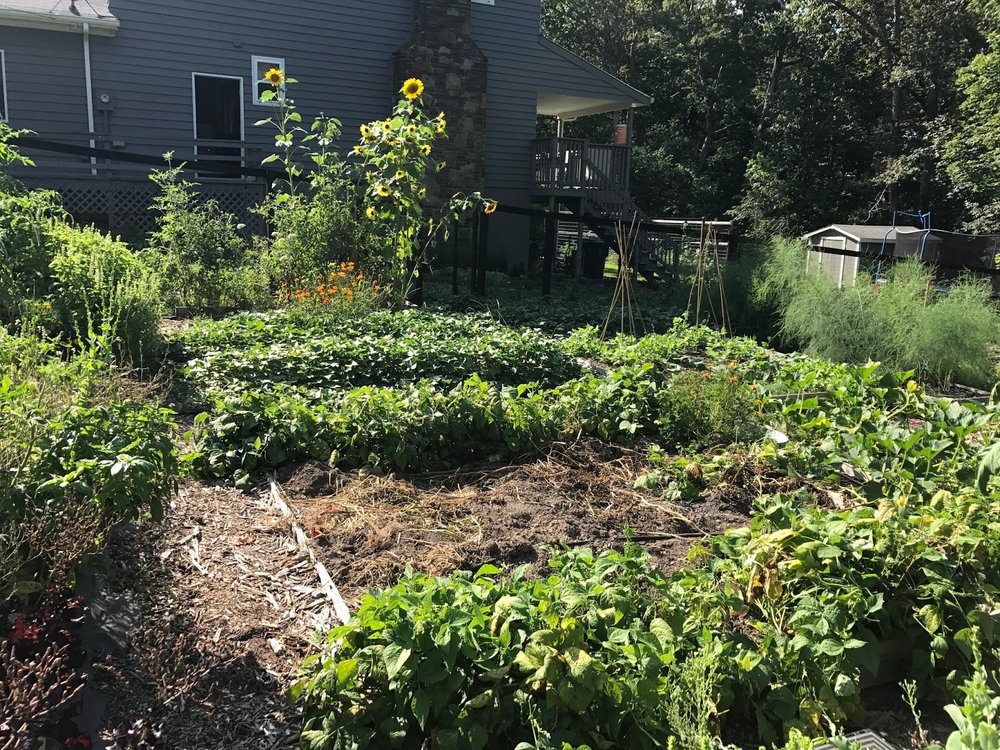 Just Pulled out my Potatoes to prep for the next crop of food!
Just Pulled out my Potatoes to prep for the next crop of food!
Intercropping. Intercropping means to plant one type of crop with a different kind.
This is something that I do all the time to maximize space. You have a crop like watermelon which takes up a lot of space. But it’s not planted until late and then doesn’t grow large until at least 4 weeks in. You can plant something that gets harvested before the watermelon starts to need the space. This is exactly what I did this year with my watermelon and I intercropped some cabbage. The cabbage went in the ground almost two months ago! And I’m just now planting my watermelon. That cabbage will be ready in two weeks, well before my watermelon is even close to filling that space.
Another thing I intercropped was radishes and summer squash. The radishes only take 30 days to be ready. By the time the squash grows large the radishes will have already been harvested.
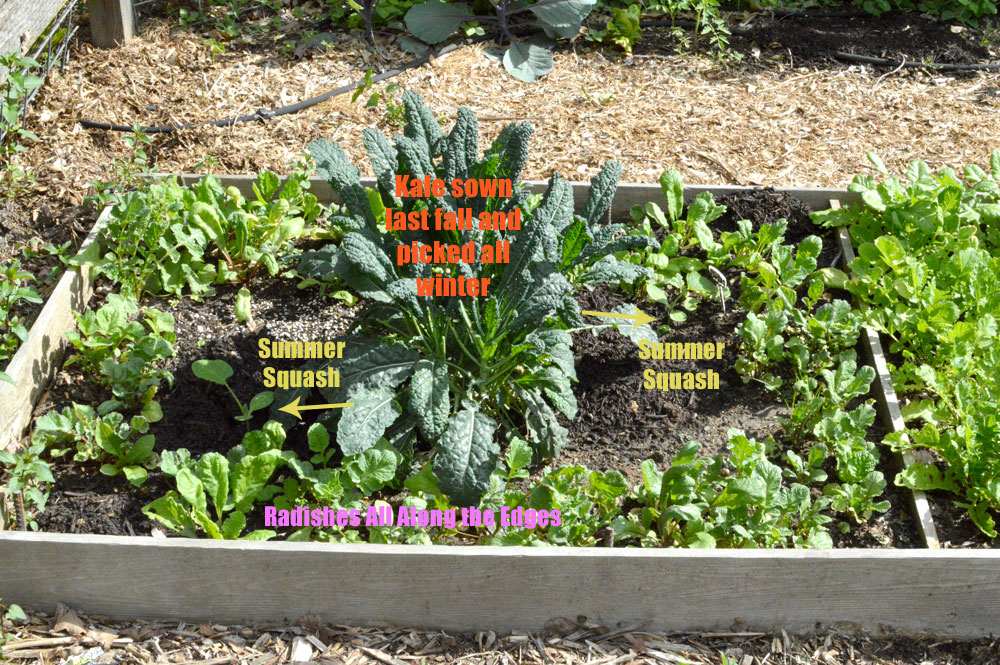
Last year I grew lettuce underneath and around all my peppers. It was a perfect way to maximize and fill the space, growing more food.
You want to know the rest of the secrets to growing more food in a small space?
#2 Grow During the All the Seasons
Yes it can be done. While your plants may not be technically “growing” during the worst of winter, they will grow slowly up until that point and slowly after that point. I think we often underestimate how much can be grown during the off seasons.
I usually plant spinach about four weeks before the first frost hits. It grows slowly all winter and then at the end of February is the first thing to produce a good crop. Remember that my average last frost date is April 25th. This is almost 2 months before the last frost that I will already be harvesting. You can grow more than you think you can. It’s all in choosing the right crops for the season.

Use low tunnels or a greenhouse. Low tunnels are a winter staple in my garden. I don’t have the money or space for a greenhouse right now so the low tunnels are a great alternative. I use pvc arches as supports, then layer row cover fabric over the top of that, and in the worst of winter will do a sheet of plastic over the top of the row cover. It needs to be secured but it can act like a mini greenhouse right in your garden!
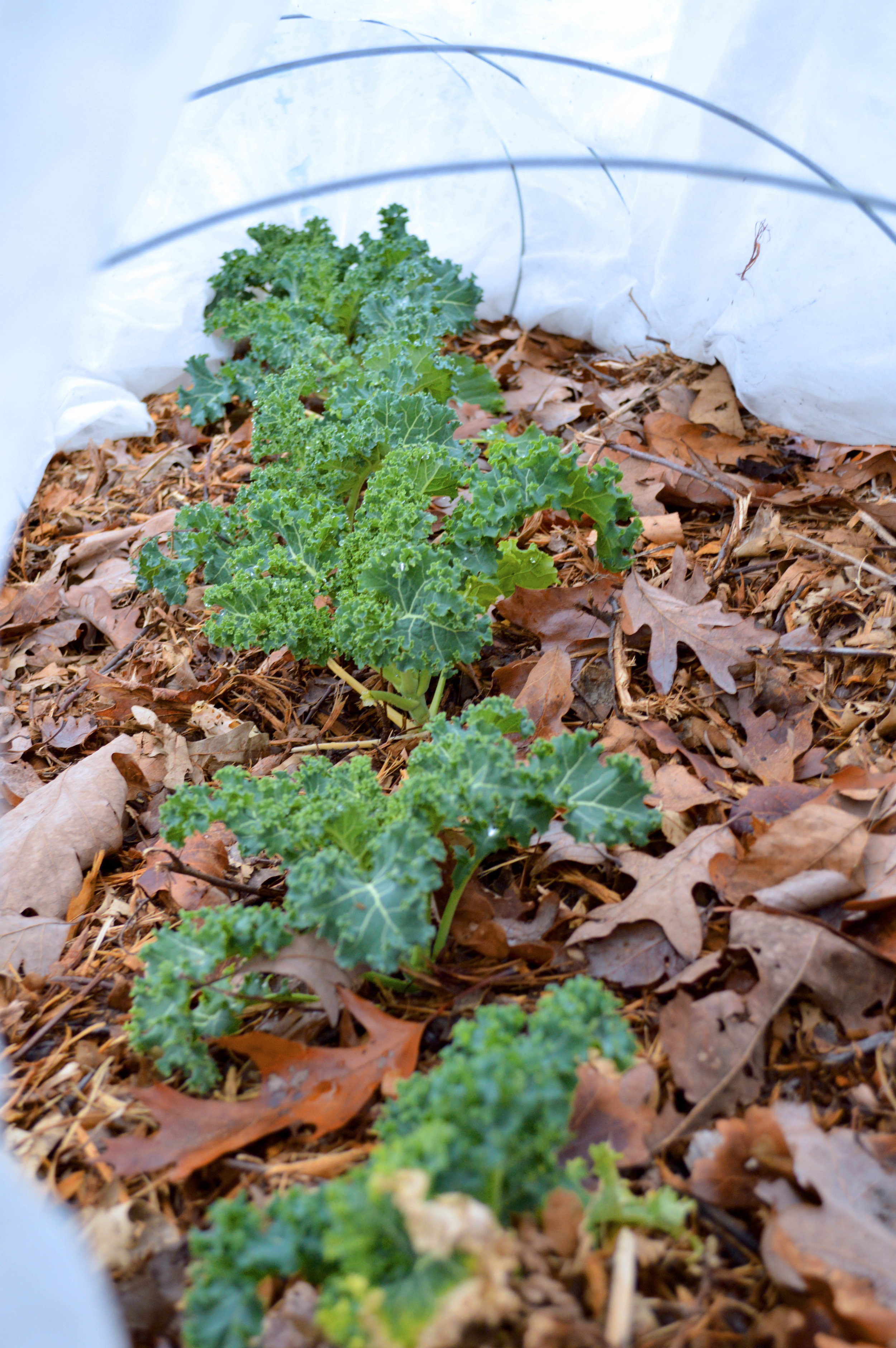
#3 Use Vertical Space
This is one you may have already heard of when it comes to maximizing garden space. And it is popular for a reason. It can save a lot of space. In most cases, I’ve calculated I save 75% of space by growing vertically instead of letting plants sprawl on the ground.
I lot of my garden is grown vertically. I have trellis’ everywhere. I use them for peas, cucumbers, beans, and tomatoes. This year I’m experimenting with using them for butternut squash.
 Snap Pea Trellis is just netting on a wood Frame
Snap Pea Trellis is just netting on a wood Frame
There are many different types of trellis’ and they can be so beautiful! This year, I put in two trellis arched over the beds. I’ve made them out of electrical conduit, cattle fencing, wood and string. Anything works, just make sure it’s sturdy.
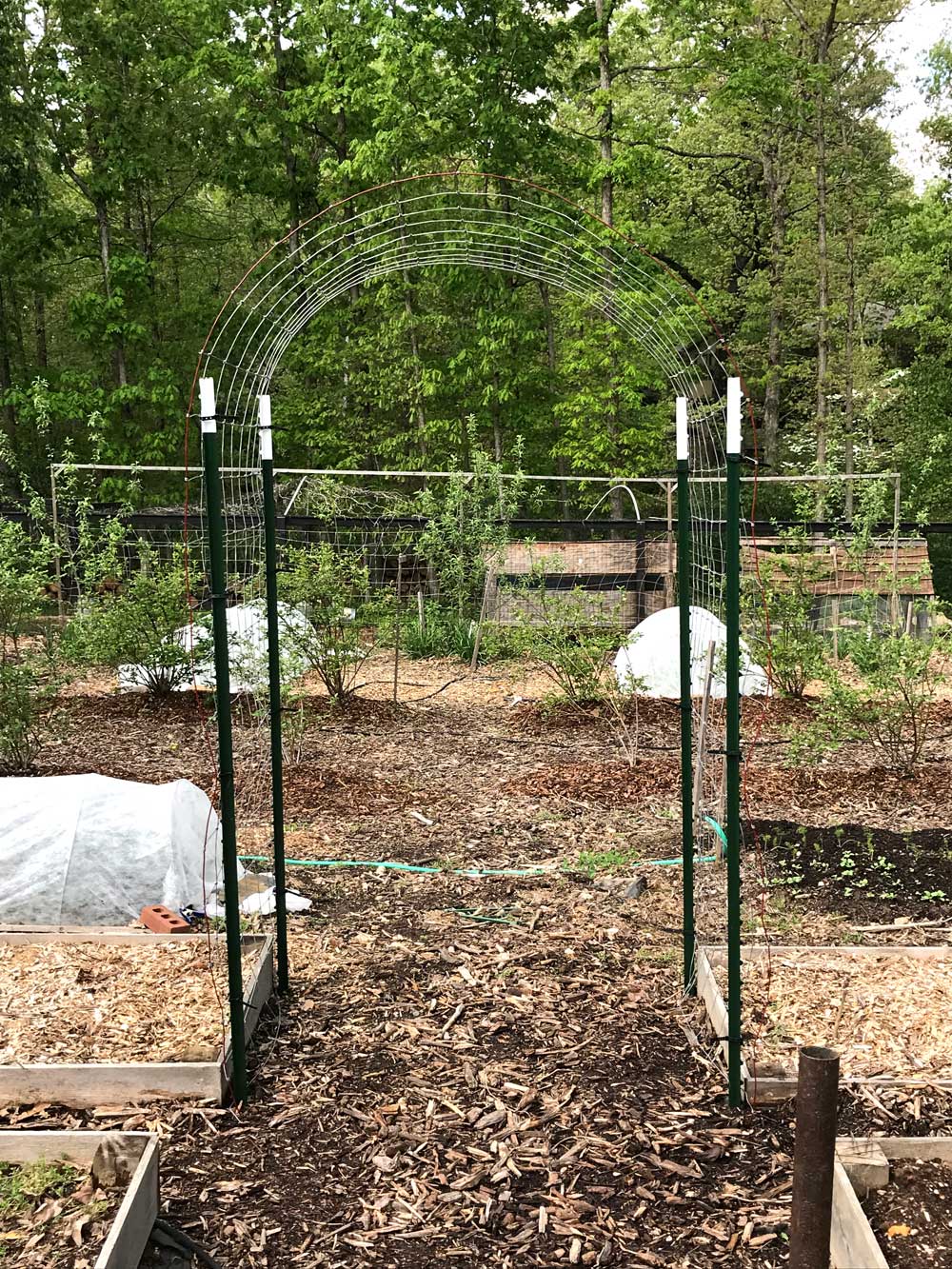 Arch Trellis
Arch Trellis
#4 Measure your Spacing
If you have a small area, I highly recommend you measure your spacing and not estimate. It sounds a bit far fetched, however, if you think of all the plants of your garden and all the inches saved by using exact spacing, that can really add up.
The other benefit of perfect spacing is for many crops, you get less weed pressure because you don’t have too much space between your plants.

On the other hand, You don’t want too little space between plants either. Don’t be tempted to plant crops too close together. I’ve seen it recommended in many books, but where I grow, I can’t do it. Diseases are more likely to happen due to close spacing because your plants need light and air. In Arkansas it’s humid and its really wet. Maybe out in the Western US you can plant close together but I don’t recommend it in central and eastern US.
Spacing plants properly will allow for a better harvest in the long run since plants will be healthier and the roots will be able to go further for nutrients because it’s not competing with the neighboring plant.
One last point against too close of spacing. In my mother-in-laws garden (she lives in Idaho) she had planted her lettuce very close together and was battling a slug problem. If you have a lot of slugs make sure your plants are planted at the proper spacing. I also experienced this when I planted my napa cabbage too close together one year and had a serious slug problem.
#5 Grow Productive Crop Varieties
While it’s really fun to add in a few unusual and colorful plants, oftentimes they are not the most productive. If you looking to grow a lot of food in a small space, don’t get too caught up in the rare and unusual but less productive plants. I like to do 80% productive varieties and 20% fun, experimental, and colorful varieties. Experimenting with the last 20% is important because sometimes even the usual and colorful varieties can be productive and bear lots of fruit.
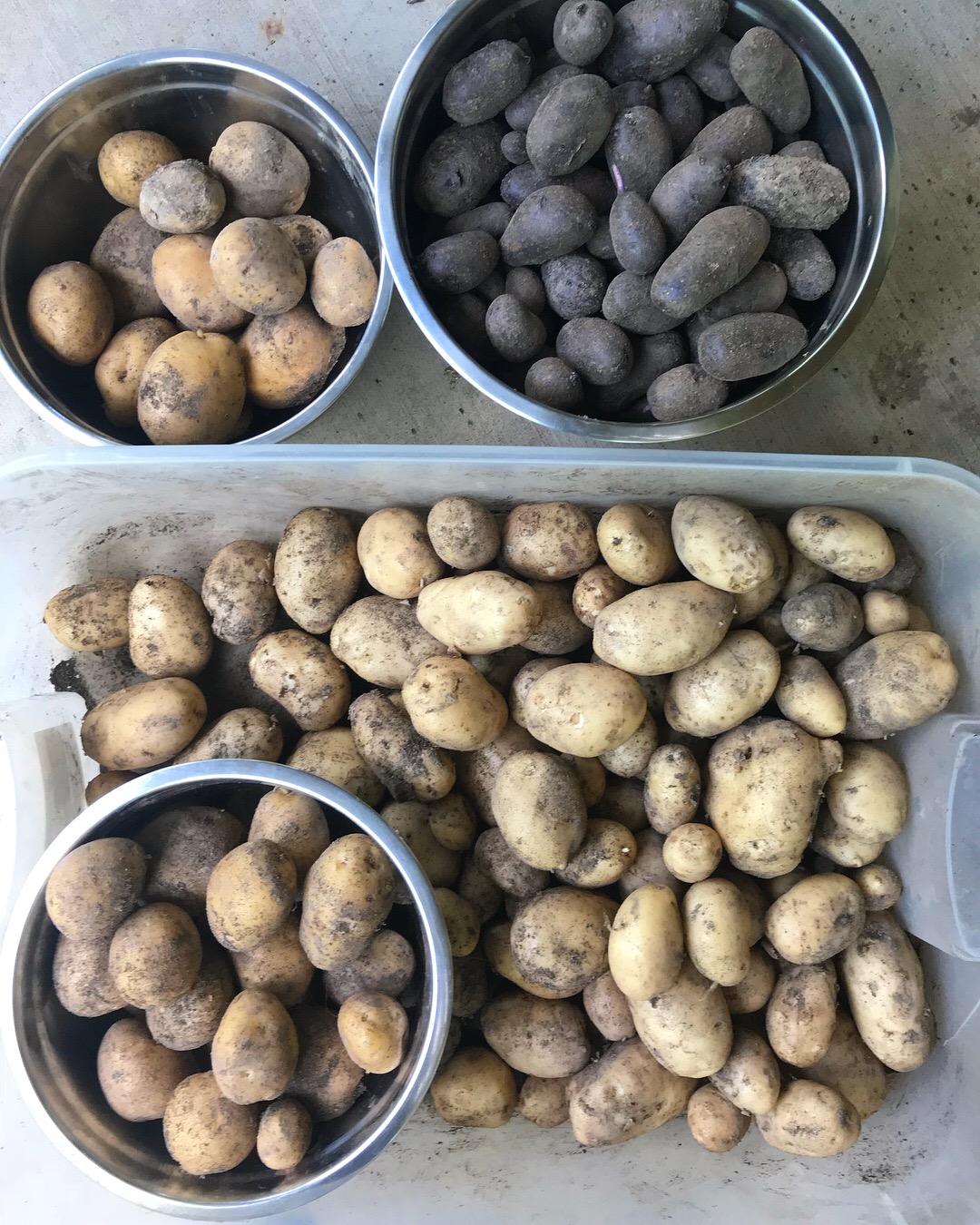
I can give you a few examples. Last year, I grew Molly Magic potatoes. They are so beautiful and the most vivid purple I’ve ever seen in a vegetable. However, they aren’t the most productive. They require about the same amount of space as my other varieties but produce far less potatoes.
For many years, I grew all indeterminate tomatoes, including cherry, slicing, and paste. What I didn’t know is that determinate paste varieties like Roma are incredibly productive. The 9 Roma’s tomatoes I planted last year on a whim out produced the 31 other varieties I planted. Isn’t that incredible?! I got an estimated 100 jars of tomato products from just those plants (and a few jersey devil and amish paste). That is why I highly recommend planting half of your year supply from determinate paste tomatoes if your planning on preserving them.
Let’s Recap!
Here’s how to grow more food in a small space:
Succession Plant
Same Plants, Different Planting Times
Replaced Harvested Plants with New Ones
Intercrop your plants growing several types of different crops together to maximize the space.
Grow During all the Seasons
Use Vertical Space
Measure Your Spacing
Grow Productive Crop Varieties
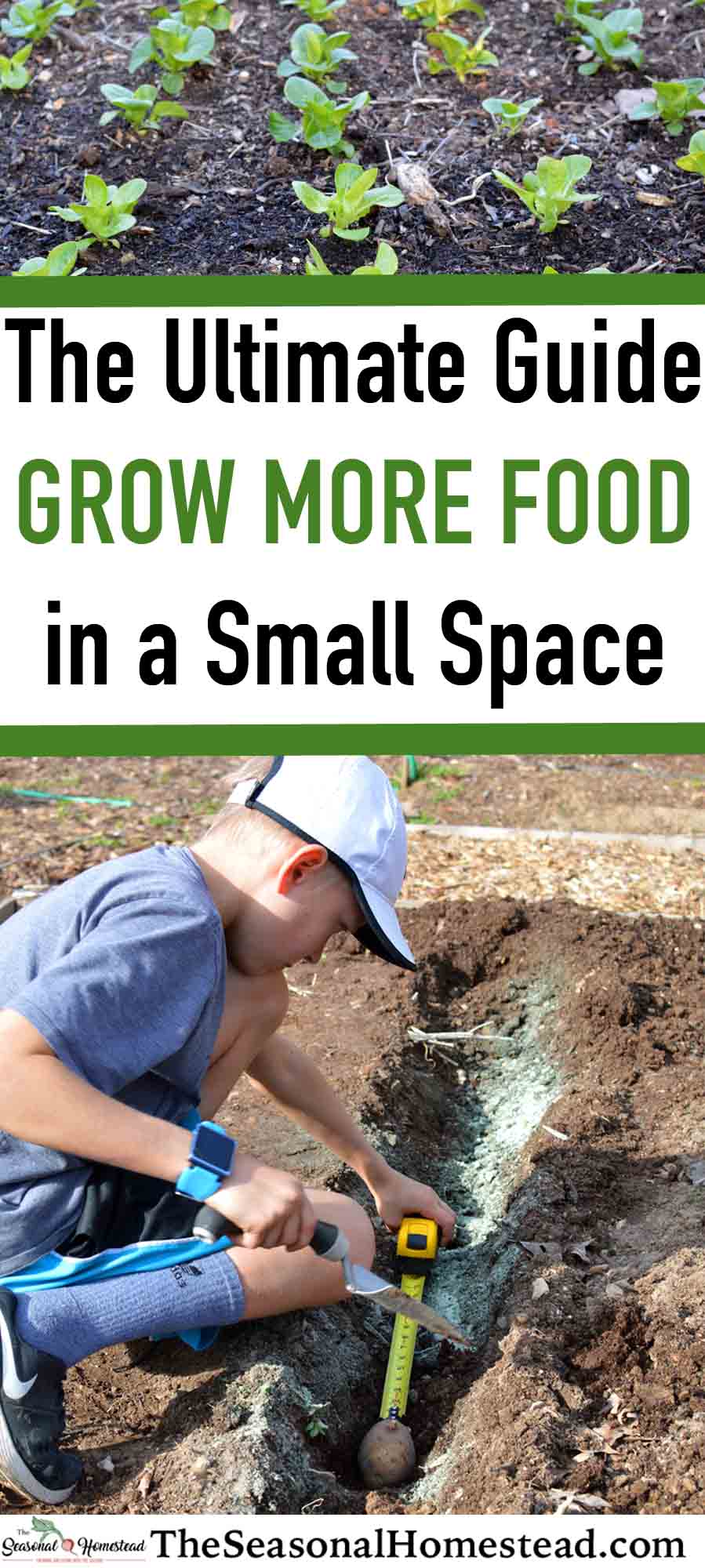

2 comments
What an eye opener!! Do you have this in print anywhere?
Within the next year, I will be starting my journey as a Sustenance Homesteader and this info I can ‘practice ‘ in the interim.
Thank you in advance!
Kevin
I don’t have it in print. I wonder if there is a way you could print the whole webpage.